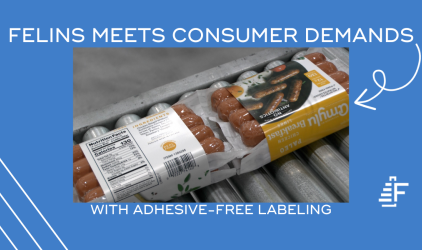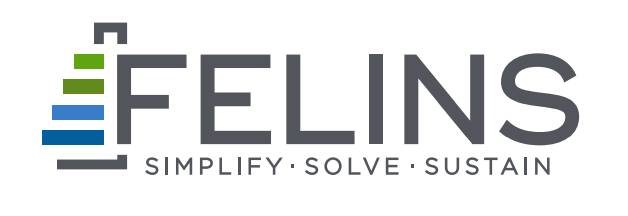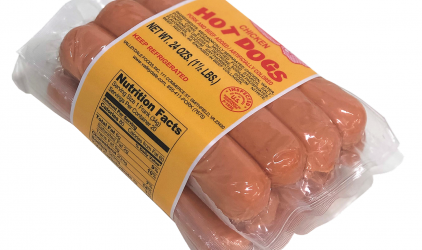In today’s consumer-centric market, the food industry is relying more heavily on equipment and materials that streamline the packaging process while maintaining product quality, increasing sustainability, and providing ROI. Banding is an elite form of bundling, labeling and sleeving that is frequently overlooked. Here are five myths about banding you should reconsider:
1. VERSATILITY
Food products can vary in shape and size, therefore requiring unique bundling techniques. As a result, many packaging companies are hesitant to commit to one machine that is not versatile enough for multiple applications. ATS banding solutions have various designs, customization options, tension settings and materials to better accommodate unique applications, including:
- Labeling – Adhesive and heat-free labeling
- Sleeving – Replace your tedious chipboard sleeving process with automated paper banding and sleeving
- Logistics – Decreased packaging weight and space to reduce freight costs
- Labor – Reduce labor costs and waste
- Bundling – Multipacks, club packs, and bunches of fresh produce
- Step Reduction – Bundling and labeling can be done in one step rather than multiple
2. SPEED
Due to recent surges in consumer demands for premium packaged foods and home delivery kits, packaging companies have been turning to automation to increase production and throughput. Although stand-alone machines can accommodate high speed requirements, automation “will play an even greater role in food production and processing, enabling companies to produce more for less in a shorter time.”
By introducing banding automation to production lines, companies may be able to significantly increase throughput, reduce labor and freight costs, and see beneficial value and ROI.
3. FDA & USDA APPROVED
The FDA requires any food contact substance (FCS) to be safe and, therefore, not “hazardous to the health of man or animal.” Many banding machines are painted with non-food-grade paint and not FDA approved. However, ATS US-2000 and 21000 series banding machines are available in stainless steel or food-grade paint making the machines FDA compliant. With a vast variety of food safe materials and recyclable, customers can label, bundle, and pack food products safely and without damage.
4. CUSTOMIZATION
While many packaging and banding machines are one-size-fits-all, ATS banding machines are fully customizable to adhere to all FDA & USDA regulations. These customization options include:
- The material dispenser can be placed above or on the side of machines so material does not come near the floor.
- The arch can be rotated 90 degrees to sit on the side of the machine for very wet products.
- Machines are available in different sized arches (or no arch) to accommodate a variety of product sizes.
- Automation is an option for high-volume facilities.
- Machines operate with material widths from 15mm to 100mm.
- Material can be pre-printed and/or printed daily with a variable data printer to better market products.
5. ALL-IN-ONE
Many products on shelves today are wrapped with one material and covered in several additional materials (chipboard, adhesives) for product branding, expiration dates, barcodes, and more. Each material adds another step in the packaging process which can decrease throughput and increase packaging waste.
Banding material can safely be in contact with food while providing a firm hold on the product or bundle. In addition, banding streamlines the packaging process by bundling and labeling simultaneously and eliminating additional packaging steps.
Still not sure if banding is the solution for you? Contact us anytime – we’d love to help!
MORE INSIGHT...

Global Produce and Floral Show 2023 – Trade Show Recap with Felins Packaging
The Felins team was thrilled to connect with fresh produce and floral packaging leaders at the vibrant Global Produce and Floral Show (GPFS) 2023 in Anaheim last week. As the premier trade show for the latest in produce and floral products as…

FELINS MEETS CONSUMER DEMANDS WITH ADHESIVE FREE LABELING
Richfield, WI (September 27, 2023)- In today’s retail food world, product labels do more than just provide basic information – they also create an emotional bond between consumers and brands. As such, labels play a crucial role in packaging.…

PACK Expo 2023 Recap with Felins Packaging
The Felins team is still buzzing after an incredible week connecting with industry peers and showcasing the latest packaging innovations at PACK Expo Las Vegas 2023. As the most comprehensive packaging event in the world, this year’s show did not…


